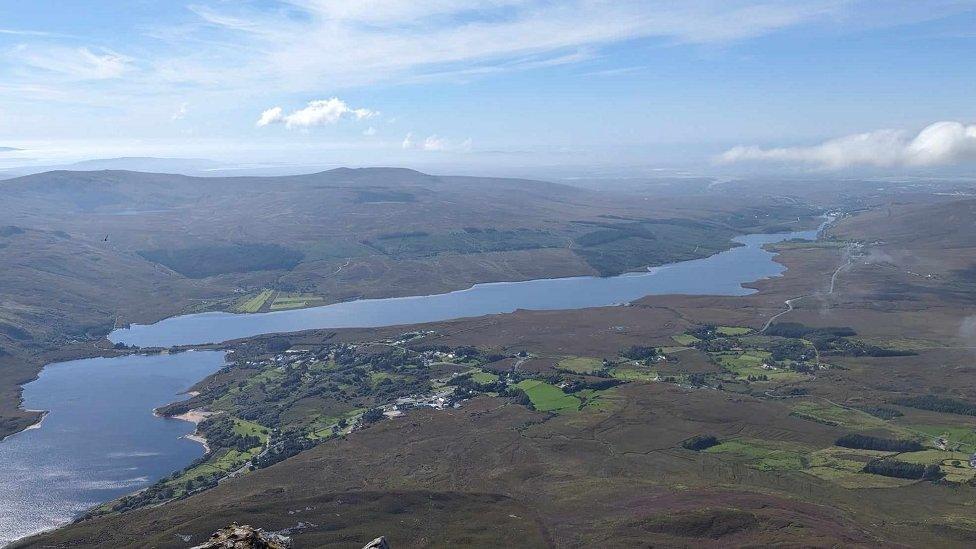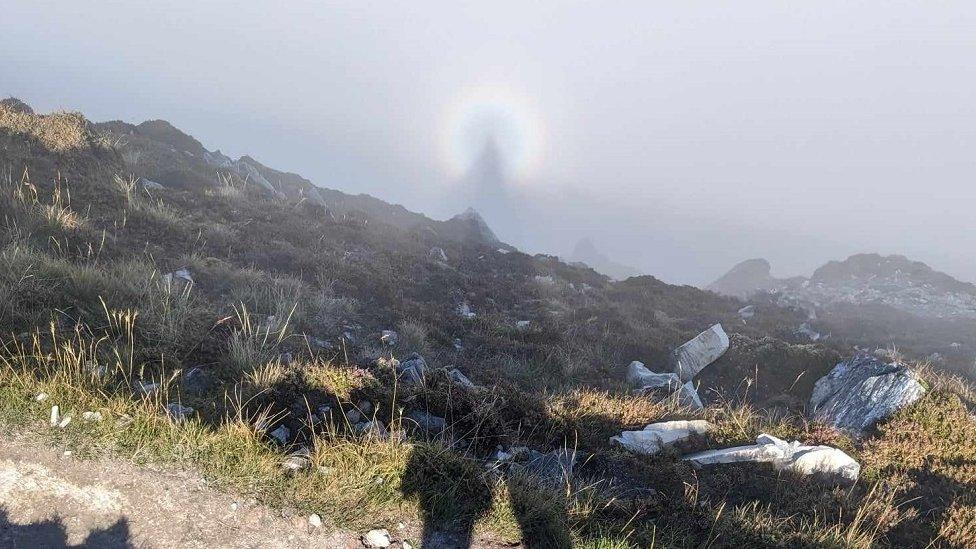Mount Errigal: BBC reporter captures rare Brocken spectre
- Published

Dunlewey Lough can be seen from the summit of Mount Errigal
Are you planning on going on a Boxing Day walk in the mountains to blow away the cobwebs after some Christmas Day indulgence?
Many of us enjoy the views, the fresh air, the wildness.
But during a leisurely hike earlier in the year I also enjoyed a rare weather phenomenon known as a Brocken spectre after summiting Mount Errigal.
According to the Met Office, a Brocken spectre is a large shadow of an observer cast onto cloud or mist and is named after the German mountain on which is was first noted.
It was spellbinding.
The skies were mostly clear and the summer sun was glistening on Dunlewey Lough, at the foot of the renowned mountain in County Donegal, in the Republic of Ireland.
The 751m (2,464ft) peak had delivered a breathtaking 360 degree vista.
But the weather does not tend to stay the same for too long on the high ground and a cover of cloud began closing in and rising towards the back of the mountain.
Heading back down the mountainside, with two young lads from Omagh, County Tyrone, who were making their first 'pilgrimage' to the majestic mountain, we were still taking in the clear views out towards the Atlantic Ocean when I glanced sideward and there it was, a Brocken spectre.
I was torn. Should I take out my phone and capture it or just stare and study this gift of nature?

I couldn't resist, so the phone came out.
It felt other worldly as I observed what looked like my own shadow inside this circular rainbow.
I was awestruck.
There were clear views to the front and a Brocken spectre at the back of the mountain.
It was nature delivering two very different kinds of beauty, side by side.

Kevin Sharkey said he had to get a photo with the rare Brocken Spectre
But how does it happen?
According to the Met Office, "When an observer stands on a hill which is partially enveloped in mist and in such a position that their shadow is thrown on to the mist, they may get the illusion that the shadow is a person seen dimly through the mist.
"The illusion is that this person or spectre is gigantic and at a considerable distance away from them.
"The sun shining behind the observer projects their shadow through the mist, while the magnification of the shadow is an optical illusion which makes the shadow on nearby clouds seem at the same distance at faraway landmarks seen through the cloud."
It further explains: "Similarly, the shadow falls upon water droplets of varying distance which distorts perception and can make the shadow appear to move as the clouds vary and shift.
"This all combines to make the rather disorienting effect of a giant shadow moving in the distance."
So if the mountains don't deliver the crystal clear views we hope for over the holiday season, we might just find another wonder of nature in the clouds.
- Published3 January 2020
